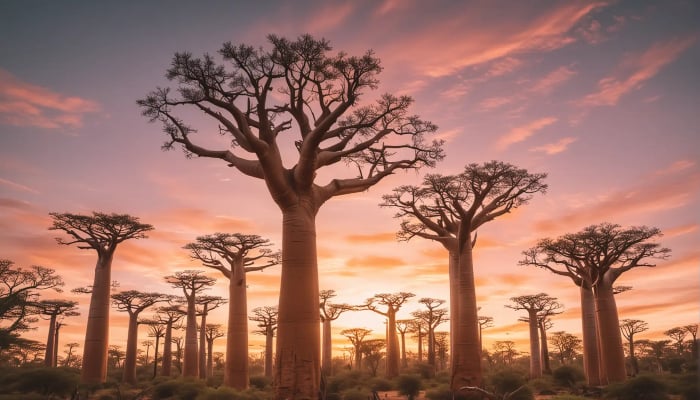
Researchers have finally solved the mystery behind ancient baobab trees, which are also known as ‘upside down trees'.
Due to their strange structure and longevity, baobab trees are known as the 'tree of life' or 'upside-down tree.'
As per BBC report, DNA studies found that these trees first arose in Madagascar about 21 million years ago.
Their seeds were later carried on to Australia and Africa, where they evolved into different species.
Researchers studied eight baobab species, six of which are found in Madagascar, one in north-west Australia and another from widespread across Africa.
Dr Ilia Leitch of the Royal Botanic Gardens, Kew, along with her husband, Prof Andrew Leitch, of Queen Mary University of London, worked on a study about baobab trees.
Leitch told BBC, “We have been able to pinpoint the origin of baobabs, which are an iconic keystone species supporting a wide diversity of animals and plants as well as humans.”
She added, “And the data have enabled us to provide important new insights which will inform their conservation to safeguard their future.”
Baobab trees are also called the ‘mother of the forest.’
These trees can live for thousands of years, growing to a huge size. The ancient trees store large amounts of water in their trunks to survive through the dry season.
But baobab trees are now facing trouble because of climate change and deforestation.















